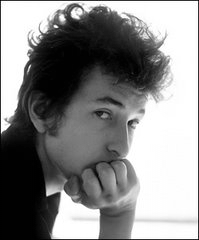I planned to post this over a week ago, but never got around to it. Oh well...
I should preface this review by saying that Spike Lee is one of my favorite directors. I tend to like his films more than the critics do, and I'd have to say although he's been nominated only twice for an Oscar (in 1989 for Do The Right Thing's screenplay, and for the documentary 4 Little Girls) I believe he's made more truly great films than, say, Clint Eastwood, who's won five times. It saddens me to report, then, that his first war movie, Miracle at St. Anna, is definitely not his greatest work. It's far from his worst, however.
You see, Spike Lee's biggest problem has always been his tendency to lose focus of his main narrative and veer off-course. He has a strange case of what's commonly known as "first-time filmmaker" syndrome, where the director, making his first film and not sure whether he'll ever get the chance to make another, throws everything he's ever wanted to do into his first film, thus overloading it with an embarrassment of riches. This is a forgivable phenomenon with filmmakers, and it's usually a one-time deal. The problem with Spike is that he's been making films for over 20 years, and still suffers from this. This results in films that are 20-30 minutes too long, filled with great sequences, but are also a chore to sit through.
Miracle at St. Anna is no different. It contains two of the best sequences Spike has ever directed; the first is a dramatization of the massacre at St. Anna, where hundreds of women and children were slaughtered. One shot in particular, which goes on for several minutes, follows a soldier's handgun as he draws it, holds it out, and slowly trudges through the dead bodies, shooting anyone still alive after the initial machine-gun fire. It's hard to describe, but it's one of the most powerful sequences on screen this year. The other sequence follows a group of black soldiers as they attempt to buy food at a southern malt shop, are refused service, and leave in defeat. Walking to their jeep, they retrieve their guns, return inside, and demand service again - this time at gunpoint. Coming at a late point in the film, and told in flashback, it's a brilliant sequence. It's capped by a stylized ending beat, where the soldiers in question are in a group, staring at the camera, as one by one they slowly leave the frame. It's audacious in the best way - pure Spike Lee.
But for all the great things in the movie, it has quite a lot of problems. Like I said before, it meanders in the way a lot of Spike's movies do. It starts with one thing, goes to another, tries something else, and eventually gets back on track. It's frustrating, to say the least. We spend time with characters who have little, if anything, to do with the big picture, and precious little time with the things and the people who seem to matter. (SPOILER ALERT) The only soldier of the group to survive, who we see later on in the bookend segments, has probably the least amount of scenes in the WWII segments. (SPOILER OVER) There's also some strange attempts at humor in the first third of the film, and it just doesn't fly. Probably the thing that hurts the film the most is the casting of Omar Benson Miller. He's decent, but he only has a certain range, and he's trying to pull off things that he just can't do. He's playing a simpleton, but it's more like an actor's idea of what a simple man would be like. His scenes are some of the most cringeworthy of the film, although he does get better as the picture goes on.
But, you know what? It's still a good film. And it still got me in the end. I think I have a tendency to forgive Spike Lee more than most people, because I can see where he's coming from. The end of the picture is probably the most saccharine and melodramatic thing he's ever done, but I was right with it, the whole way. It's satisfying. The rest of the movie? Not so much. But even a semi-satisfying movie is better than usual these days.
Subscribe to:
Post Comments (Atom)


No comments:
Post a Comment